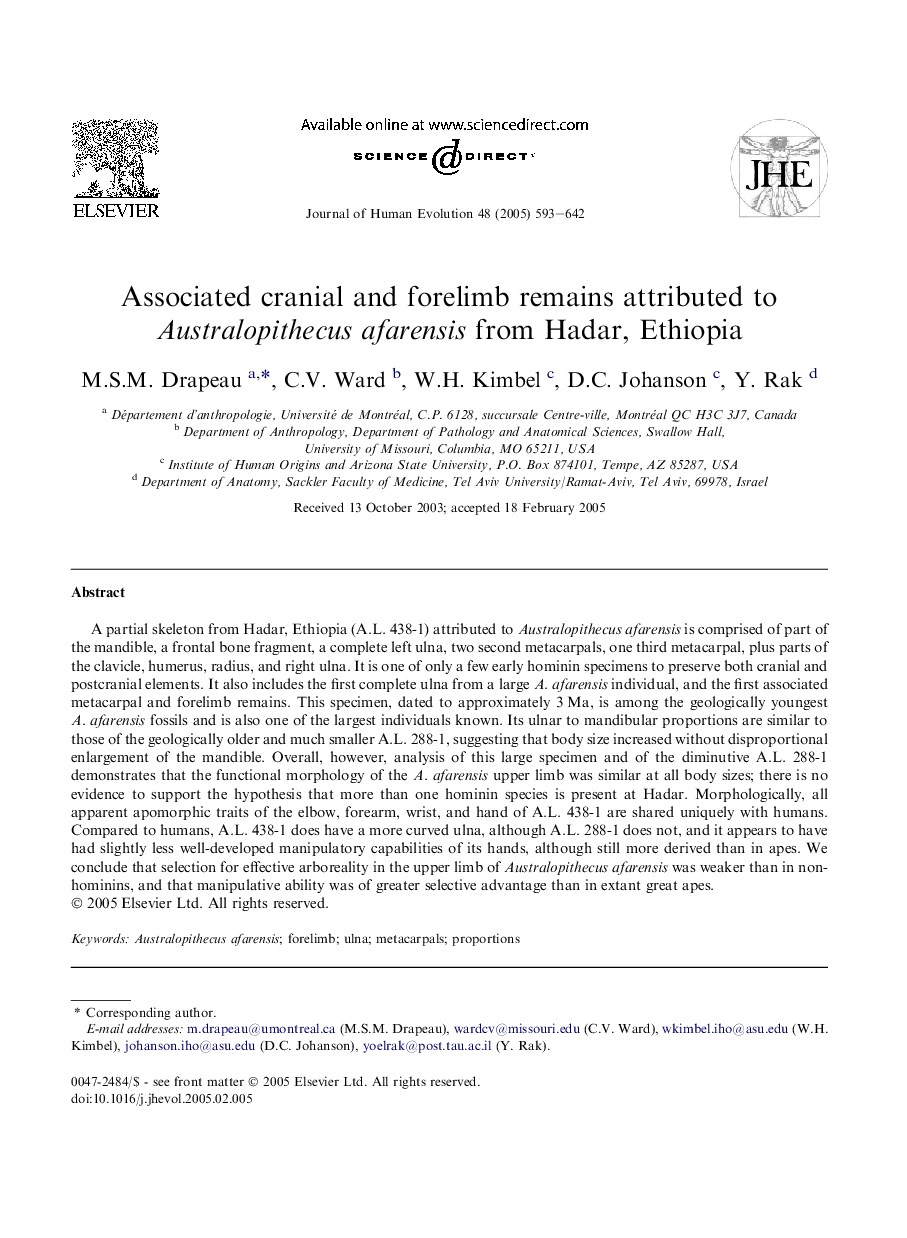| کد مقاله | کد نشریه | سال انتشار | مقاله انگلیسی | نسخه تمام متن |
|---|---|---|---|---|
| 9486098 | 1329577 | 2005 | 50 صفحه PDF | دانلود رایگان |
عنوان انگلیسی مقاله ISI
Associated cranial and forelimb remains attributed to Australopithecus afarensis from Hadar, Ethiopia
دانلود مقاله + سفارش ترجمه
دانلود مقاله ISI انگلیسی
رایگان برای ایرانیان
کلمات کلیدی
موضوعات مرتبط
علوم زیستی و بیوفناوری
علوم کشاورزی و بیولوژیک
بوم شناسی، تکامل، رفتار و سامانه شناسی
پیش نمایش صفحه اول مقاله

چکیده انگلیسی
A partial skeleton from Hadar, Ethiopia (A.L. 438-1) attributed to Australopithecus afarensis is comprised of part of the mandible, a frontal bone fragment, a complete left ulna, two second metacarpals, one third metacarpal, plus parts of the clavicle, humerus, radius, and right ulna. It is one of only a few early hominin specimens to preserve both cranial and postcranial elements. It also includes the first complete ulna from a large A. afarensis individual, and the first associated metacarpal and forelimb remains. This specimen, dated to approximately 3Â Ma, is among the geologically youngest A. afarensis fossils and is also one of the largest individuals known. Its ulnar to mandibular proportions are similar to those of the geologically older and much smaller A.L. 288-1, suggesting that body size increased without disproportional enlargement of the mandible. Overall, however, analysis of this large specimen and of the diminutive A.L. 288-1 demonstrates that the functional morphology of the A. afarensis upper limb was similar at all body sizes; there is no evidence to support the hypothesis that more than one hominin species is present at Hadar. Morphologically, all apparent apomorphic traits of the elbow, forearm, wrist, and hand of A.L. 438-1 are shared uniquely with humans. Compared to humans, A.L. 438-1 does have a more curved ulna, although A.L. 288-1 does not, and it appears to have had slightly less well-developed manipulatory capabilities of its hands, although still more derived than in apes. We conclude that selection for effective arboreality in the upper limb of Australopithecus afarensis was weaker than in non-hominins, and that manipulative ability was of greater selective advantage than in extant great apes.
ناشر
Database: Elsevier - ScienceDirect (ساینس دایرکت)
Journal: Journal of Human Evolution - Volume 48, Issue 6, June 2005, Pages 593-642
Journal: Journal of Human Evolution - Volume 48, Issue 6, June 2005, Pages 593-642
نویسندگان
M.S.M. Drapeau, C.V. Ward, W.H. Kimbel, D.C. Johanson, Y. Rak,